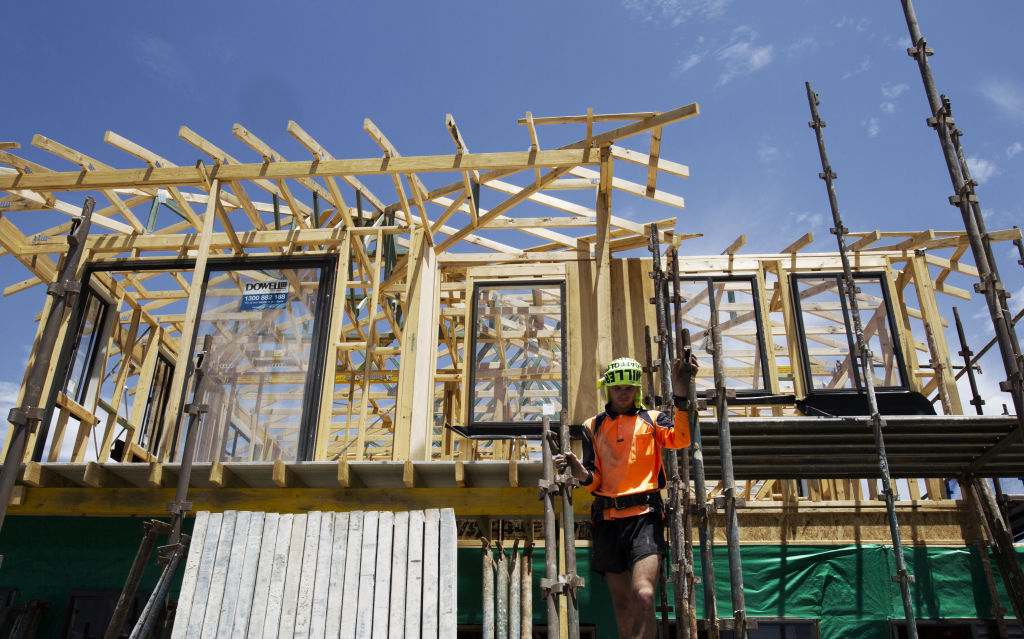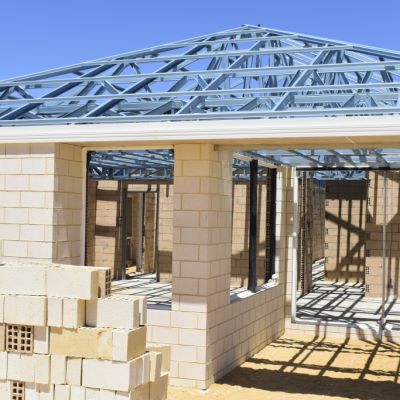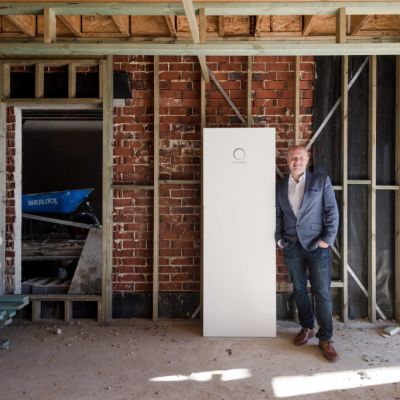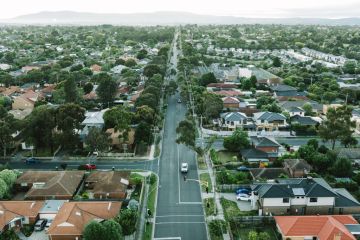Clean Energy Finance Corporation launches first green home loan, with rates as low as 2.44 per cent

Australians will soon be able to get a discounted home loan if they buy or build housing that meets high energy efficiency standards, with rock-bottom interest rates from 2.44 per cent.
The Clean Energy Finance Corporation is launching a green home loan program for borrowers who meet a minimum seven-star energy rating, which it says is the first loan to use energy efficiency measurement tools to determine eligibility.
Bank Australia is the first lender to offer the scheme and will grant a 0.4 percentage point discount on its home loan rate.
A minimum of seven stars under the Nationwide House Energy Rating Scheme (NatHERS) – which rates the energy efficiency of a home based on its design – exceeds the minimum standards of the National Construction Code, and homes built to this rating require less energy for heating and cooling.
A six-star rating is the minimum standard in most states and territories. It indicates good, but not outstanding, thermal performance, according to the scheme.
The property sector accounts for almost a quarter of Australia’s greenhouse gas emissions, according to the CEFC’s investment team executive director Richard Lovell.
He said sustainable housing design and construction could improve energy and economic outcomes.
“It’s an interesting sector because it’s a source of a lot of emissions in Australia,” Mr Lovell said.
 Not easy being green: Australia is still building four in every five new houses to no more than the minimum energy standard
Not easy being green: Australia is still building four in every five new houses to no more than the minimum energy standard Governments need a better approach on household energy efficiency: Melbourne researchers
Governments need a better approach on household energy efficiency: Melbourne researchers Hills District and Norwest in Sydney gets time in the sun with bargain solar battery offer
Hills District and Norwest in Sydney gets time in the sun with bargain solar battery offer
“Our mission is to have an influence on the broader economy … we see [green home loans] as a valuable tool to influence quality efficiency design over time as an asset.
“It does bolster the resilience of the grid if you’re able to design assets that require less electricity overall but also require less volatility in their electricity demand.”
The Bank Australia Clean Energy Home Loan will draw on up to $60 million in CEFC finance, providing the interest rate discount to mortgages below $1.5 million.
The discount is 40 basis points on the applicable Bank Australia Premium Package Home Loan rate. Based on its current lending rates, the Clean Energy Home Loan will start from 2.78 per cent p.a. variable, or 2.44 per cent p.a. fixed for two or three years.
Bank Australia will later extend the benefits of the loan to existing homes to finance green home improvements, including energy monitoring, energy storage systems, solar hot water and energy efficient airconditioning.
RMIT school of property, construction and project management senior lecturer Dr Trivess Moore said green home loans could be a good way to encourage sustainable house design and construction.
Dr Moore said it should help address any additional capital cost concerns consumers might find in sustainability products including housing.
But he believed there was more of a mental hurdle rather an economic one when it came to building sustainable housing.
“We should be able to build up to seven stars in most climate zones around Australia for no additional cost … so my concern is that sustainability then gets added as an additional cost when its improved design can reduce the initial cost to begin with,” he said.
“The perception is that there is going to be an added cost so any program or support that can be offered that helps to address that is only going to help.
“I would be hopeful the [building and construction] industry wouldn’t increase the cost just because of the new loan [on offer].”
He said simple ways such as adding additional insulation to ceilings and walls and changing windows from single to double-glazed could have an effect on a home’s energy rating.
“In Melbourne, moving from six-star to seven-star would equate to a 27 per cent reduction in heating and cooling energy,” Dr Moore said.
Green Building Council of Australia chief executive Davina Rooney said there was an increased focus from home buyers on energy efficiency and sustainability features in their homes.
“Ultimately with so many decisions at play when buying a home, making sure the budget stacks up is all important. Clearly linking a lower monthly or fortnightly mortgage repayment … makes this decision easy,” Ms Rooney said.
She said green home loans would help create new demand for lower emissions housing, and with lower costs for home owners.
We recommend
States
Capital Cities
Capital Cities - Rentals
Popular Areas
Allhomes
More







